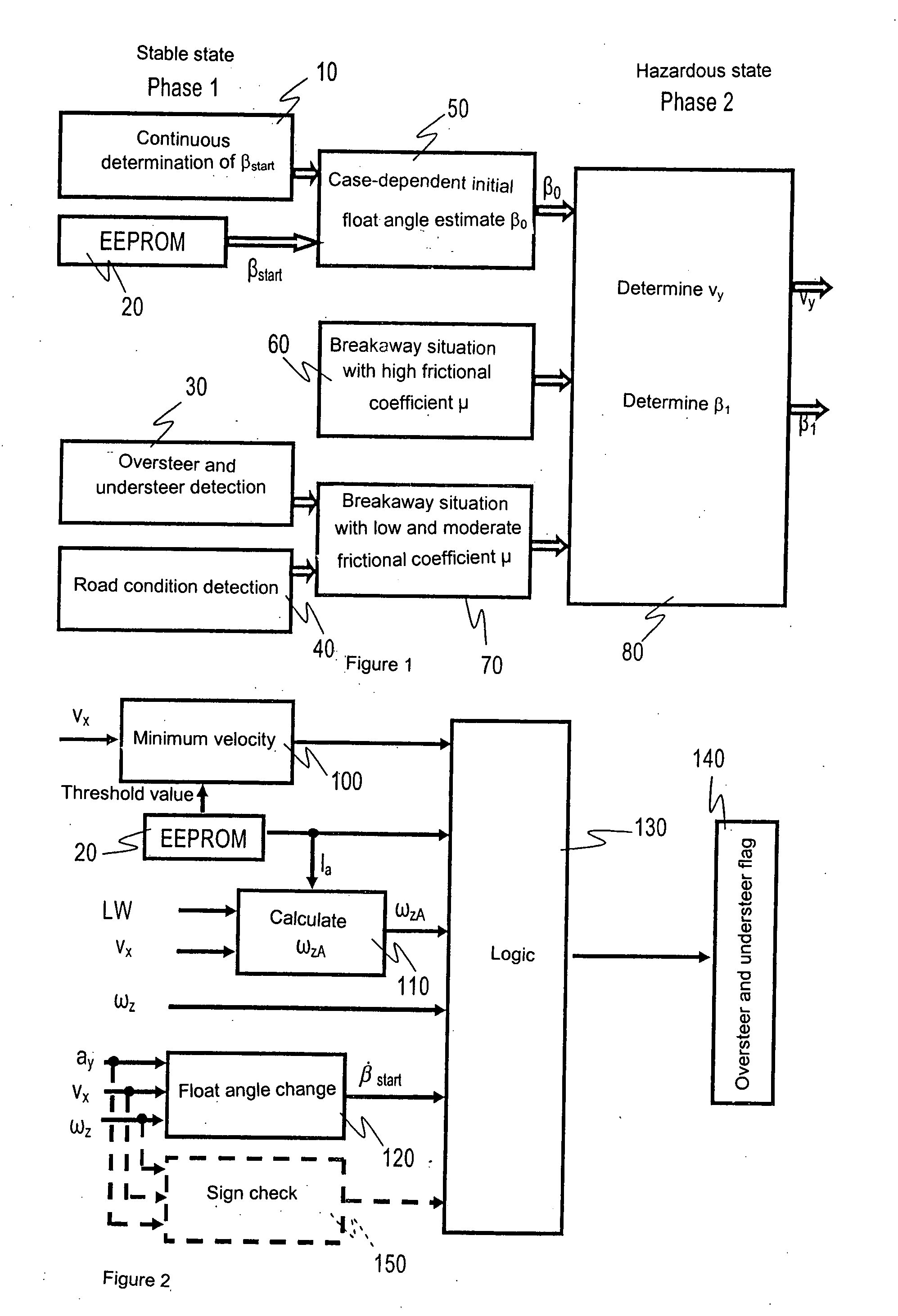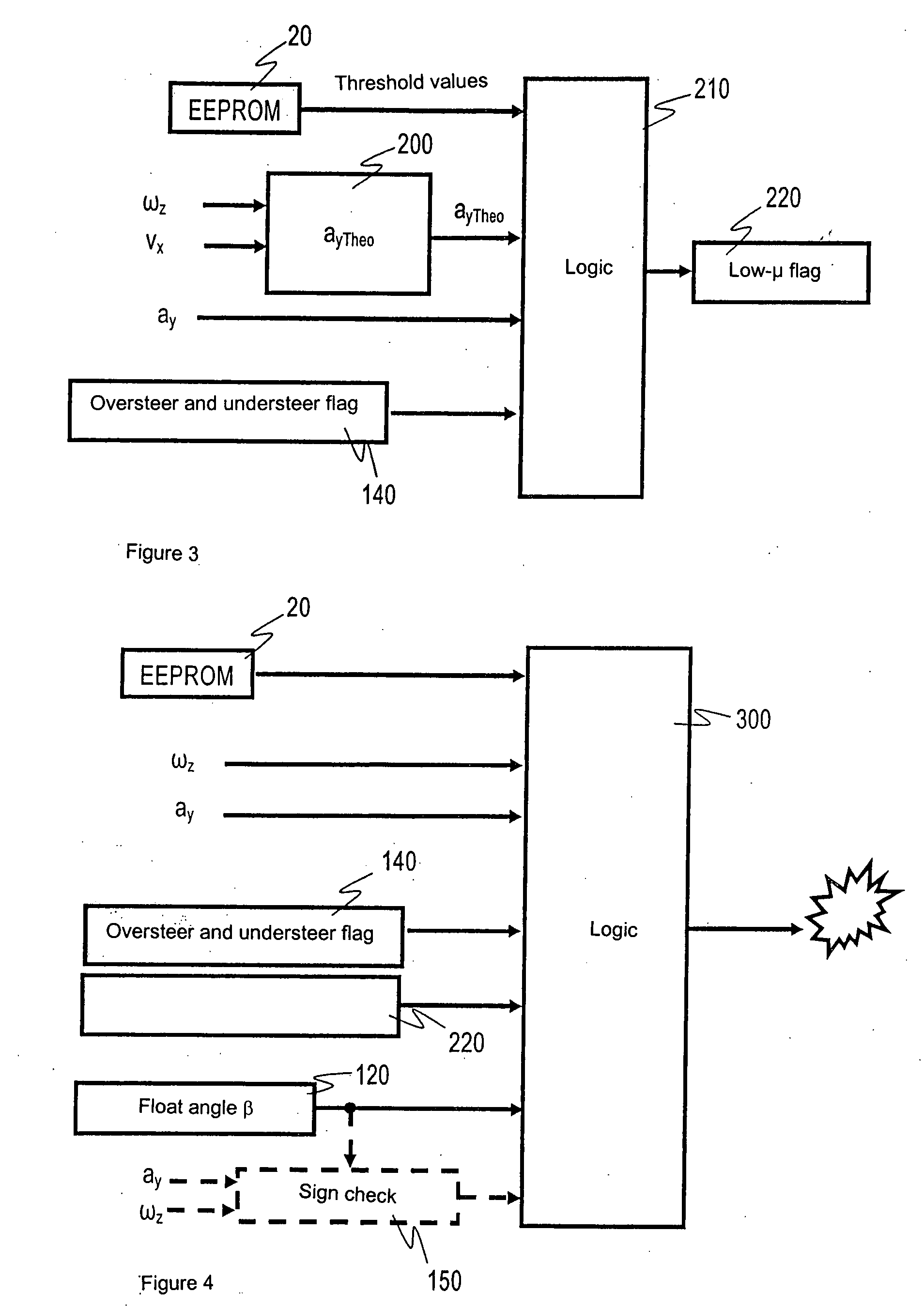Triggering Method for Activating a Lateral Velocity Estimating System for Occupant Protection Devices
a technology for occupant protection devices and estimating systems, which is applied in the direction of steering initiations, vessel parts, instruments, etc., can solve the problems of inability to reliably determine whether a rollover is present, and the soil-trip rollover is not possible, etc., to achieve reliable activation of the lateral velocity estimator, reduce the risk of injury, and improve the robustness of the algorithm
- Summary
- Abstract
- Description
- Claims
- Application Information
AI Technical Summary
Benefits of technology
Problems solved by technology
Method used
Image
Examples
Embodiment Construction
[0026]A known method for determining float angles that are greater than a value of 10°, and a lateral velocity derived from the float angles, is based on the assumption that the frictional coefficient of the road surface is high. Equation (1)
β≈ωz-ayvx,forsmallvaluesofβ(1)
yields the float angle change, which represents an indicator of a breakaway situation. This equation is informative, however, only for sufficiently large lateral and yaw accelerations, so that the float angle change becomes relatively large as compared with non-hazardous driving situations. One disadvantage of the method may be seen in the fact that when the road surface is covered with ice and snow, very low road frictional coefficients can occur.
[0027]Upon breakaway (skidding) of a vehicle on these substrate conditions, very low transverse accelerations and yaw rates occur because of the low frictional coefficient circumstances. FIG. 5 depicts the transverse accelerations and yaw rates in the context of a skid man...
PUM
 Login to View More
Login to View More Abstract
Description
Claims
Application Information
 Login to View More
Login to View More - R&D
- Intellectual Property
- Life Sciences
- Materials
- Tech Scout
- Unparalleled Data Quality
- Higher Quality Content
- 60% Fewer Hallucinations
Browse by: Latest US Patents, China's latest patents, Technical Efficacy Thesaurus, Application Domain, Technology Topic, Popular Technical Reports.
© 2025 PatSnap. All rights reserved.Legal|Privacy policy|Modern Slavery Act Transparency Statement|Sitemap|About US| Contact US: help@patsnap.com



